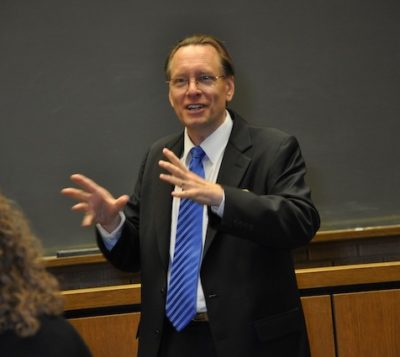Kristine Knaplund’s well-written and researched article, Synthetic Cells, Synthetic Life, and Inheritance, discusses the legal and regulatory implications of new advances in synthetic biology that may one day lead to the creation of synthetic human gametes or embryos that are made without the use of existing genetic materials. The article first discusses the current state of assisted reproduction in the United States and the various techniques that are currently available for individuals with fertility problems. Next the article examines the existing regulations that may apply synthetic gametes and either encourage or prohibit research in this area. Finally, the article tackles the question of who will be the legal parents of a child created using synthetic gametes.
Prof. Knaplund notes that assisted reproduction is “big business” in the United States, with the exchange of eggs (ova) alone being worth $4.5 billion in the United States. The use of in vitro fertilization, where the egg and sperm are joined in a Petri dish and later implanted in a woman’s uterus, was first successfully used in 1978 and since then over 3 million babies have been born worldwide using assisted reproduction technologies (“ART”). Cryopreservation (freezing) of sperm, ova and embryos is commonly used today and preimplantation genetic diagnosis is used to screen for certain genetic or chromosomal diseases. If a synthetic sperm or ovum were created, the user could select for genetic characteristics that are not present in the intended parents.
Which existing regulations apply to synthetic gametes may affect whether research in this area is encouraged or restricted. ART have been largely unregulated by the federal government and the states and can quickly move from the experimental context to clinical practice. Additionally, many of the existing regulations would not apply to synthetic gametes because they do not contain human genetic material. More stringent FDA regulations may or may not apply to synthetic gametes depending on how broadly courts read the regulations. If the FDA regulations apply, it could prevent research into synthetic gametes until safety issues are resolved.
If a child is created using synthetic gametes, there remains the question of who the law will recognize as the child’s parents. Many state statutes have not been updated do include ova donations, which causes a problem when a donated ovum is placed in the intended mother because the ovum donor may claim to be the child’s parent. Some states have also had problems with gestational carriers because the law presumes the birth mother to be the child’s parent even though this is not what the parties intend. There also remains the problem of who will be considered the parents of a child who is created using synthetic gametes after one or both of the intended parents has died. If the decedent’s genetic material is used, the decedent can be presumed to be a parent of the child. However, if a synthetic gamete is used, the decedent has no biological connection to the child. While the Uniform Probate Code allows the decedent’s intent to be a parent to be shown by a written record, only three jurisdictions have enacted the UPC section on assisted reproduction. Courts may have difficulties in determining who the parents are of a child created using synthetic gametes because of the lack of a genetic parent.
Prof. Knaplund’s article points out several issues that may arise if (or when) synthetic gametes are able to be used to create a child, while also noting the current regulatory and legal problems caused by ART. While many ART have been left largely unregulated, others have been restricted due to safety concerns. While the creation of synthetic gametes would be a breakthrough in the scientific community, some may have safety concerns about creating a child without the use of human genetic material. Whether this new ART is cautiously regulated or left unfettered could determine how long it will be before a child is created using synthetic gametes. The complex issues of parentage that could arise for a child created from synthetic materials could cause problems under the current laws of many states. These issues as well as those raised by current ART may force more states to follow the lead of the Uniform Probate Code and focus on intended parents of a child rather than genetic parents.
I highly recommend this article to anyone interested in this cutting-edge area of the law. Although the number of children born in this manner is relatively small, the numbers will increase and if the law does not take Prof. Knaplund’s advice seriously to resolve these issues timely, significant problems along with time-consuming and costly litigation are sure to follow.
[Special thanks to the outstanding assistance of Mr. Bryan Jinks, J.D. Candidate, The Ohio State University Moritz College of Law, for his assistance in preparing this review.]








